DMX wiring is a digital control protocol enabling precise communication between lighting fixtures and controllers. Widely used in entertainment and architecture, it ensures seamless signal transmission, essential for synchronized lighting effects. Based on RS-485 standards, DMX wiring supports up to 512 channels, making it a cornerstone in modern lighting systems.
What is DMX and Its Importance in Lighting Control
DMX (Digital Multiplexing) is a digital protocol enabling precise communication between lighting fixtures and controllers. Widely used in entertainment and architecture, DMX ensures synchronized lighting effects. Based on RS-485 standards, it supports up to 512 channels per universe. Its importance lies in its ability to control multiple fixtures with a single signal, making it indispensable for dynamic lighting setups. Proper DMX wiring with termination ensures reliable signal transmission, avoiding interference and signal loss.
Brief Overview of DMX Wiring Basics
Brief Overview of DMX Wiring Basics
DMX wiring is a three-wire system based on RS-485 standards, requiring twisted-pair, shielded cables for reliable signal transmission. Proper termination with a 120Ω resistor at the end of the line prevents signal reflections. Fixtures are connected in a daisy-chain topology, ensuring each device has an input and output connection. Cable management and length considerations are critical to maintain signal integrity and avoid voltage drop. Adhering to these basics ensures stable communication across lighting systems.
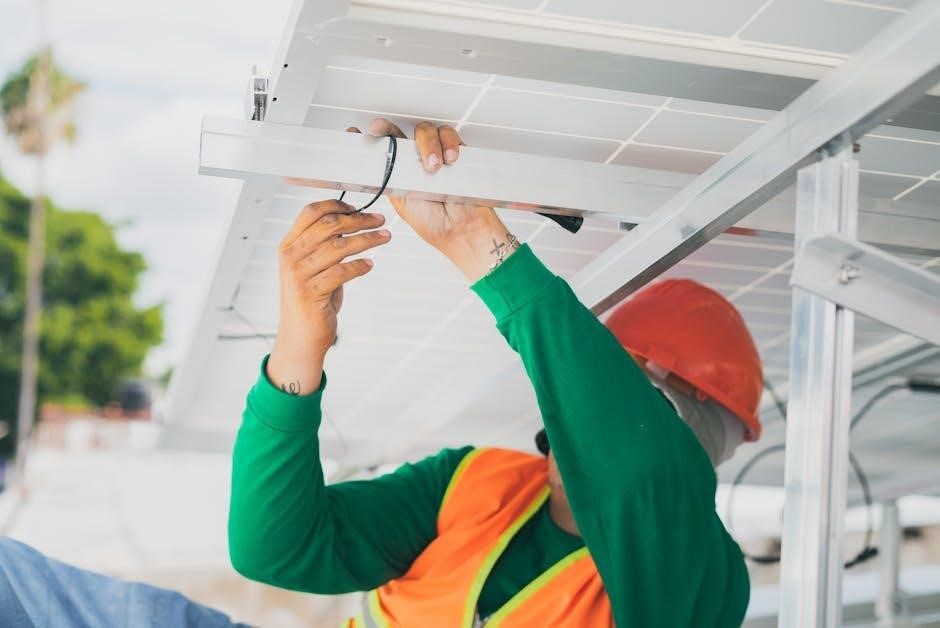
DMX Cables and Connectors
DMX systems utilize twisted-pair, shielded cables to prevent electromagnetic interference and ensure reliable signal transmission. These cables typically have a 120Ω impedance, aligning with the RS-485 standard. Common connectors include 3-pin and 5-pin XLR, and sometimes RJ45 for network integration. Proper shielding and termination with a 120Ω resistor at cable ends are crucial for signal integrity and to prevent reflections, ensuring optimal performance in lighting control systems.
Types of DMX Cables and Their Specifications
DMX cables are typically twisted-pair, shielded cables with a 120Ω impedance, designed to minimize signal degradation and interference. The most common types include 3-pin and 5-pin XLR cables, with 5-pin being the industry standard for professional setups. Some systems also use RJ45 connectors for network-based DMX control. These cables are specifically designed to meet RS-485 standards, ensuring reliable data transmission. Proper shielding and termination are essential to maintain signal integrity and prevent interference in DMX lighting systems.
Understanding DMX Connectors (XLR, RJ45, etc.)
DMX connectors, such as 3-pin and 5-pin XLR, are standard for lighting control. The 5-pin XLR is the professional standard, while 3-pin is common in simpler setups. RJ45 connectors are used for network-based DMX systems, offering flexibility in larger installations. Each connector type ensures reliable signal transmission, with pin configurations designed to maintain data integrity. Proper connector selection is crucial to prevent signal degradation and ensure seamless communication between DMX devices.
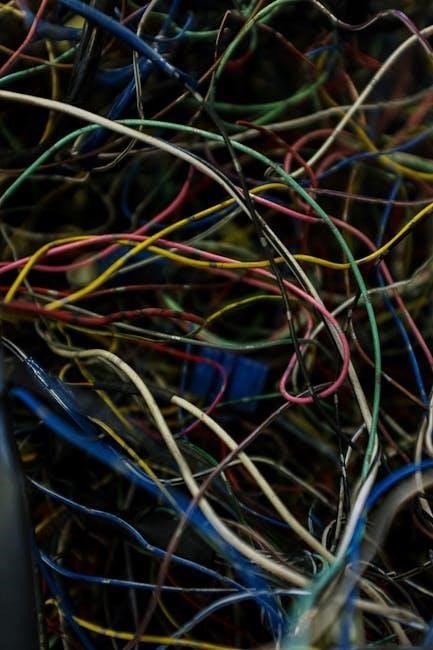
DMX Termination and Signal Integrity
DMX termination prevents signal reflections, ensuring data integrity. A 120Ω resistor at the cable’s end is crucial for maintaining stable communication across the DMX network.
Why Termination is Critical in DMX Systems
Termination is vital in DMX systems to prevent signal reflections, which can distort data and cause unpredictable behavior in lighting fixtures. Without proper termination, signals can bounce back, leading to errors and communication failures. A 120Ω resistor at the end of the DMX line absorbs the signal, ensuring clean transmission and reliable operation of all connected devices. This maintains system integrity and performance.
How to Properly Terminate a DMX Line
To terminate a DMX line correctly, install a 120Ω resistor at the end of the cable to absorb signals and prevent reflections. Locate the DMX line’s termination point, typically at the last fixture in a daisy-chain setup. Connect the resistor across the data lines (pins 2 and 3 for XLR connectors) to ensure proper signal absorption. Improper termination can cause signal degradation, leading to erratic behavior or complete data loss. Always follow manufacturer guidelines for resistor installation and system testing.
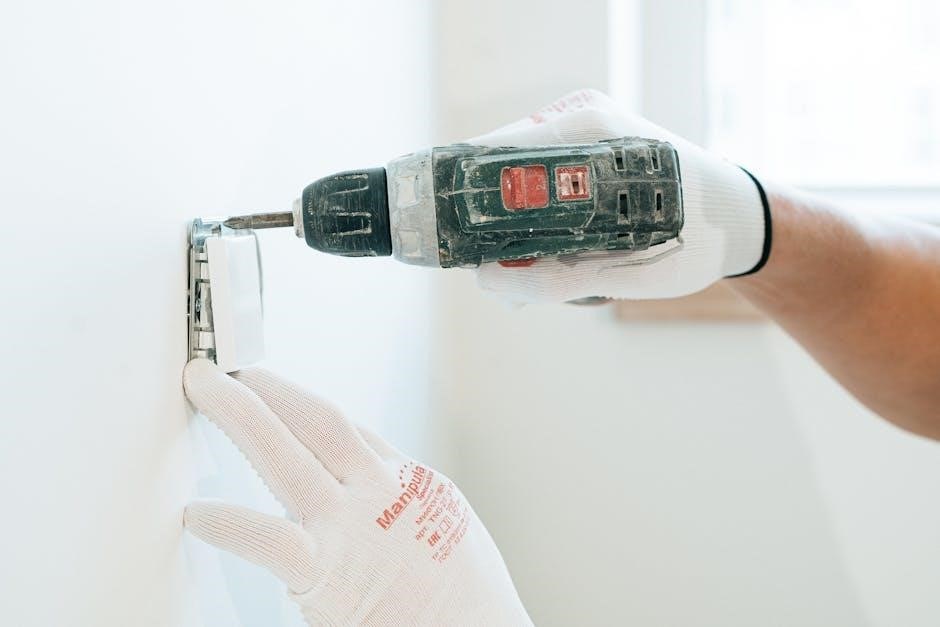
DMX Splitters and Their Role
DMX splitters distribute control signals to multiple fixtures, ensuring reliable communication. They isolate signal runs, prevent interference, and protect the console from faults in connected devices, enhancing system stability.
What Are DMX Splitters and How They Work
DMX splitters are devices that distribute DMX signals to multiple lighting fixtures, ensuring reliable communication across the system. They isolate individual runs, preventing signal degradation and interference. Splitters can be passive or active, with active splitters amplifying signals for longer cable runs. They protect the DMX controller from faults in connected devices and ensure clean signal transmission. By splitting the DMX signal, splitters enable the control of numerous fixtures while maintaining system stability and performance. They are essential for complex lighting setups with multiple devices.
Best Practices for Using DMX Splitters
For optimal DMX splitter performance, ensure they are powered appropriately, either through mains or low-voltage supplies. Use high-quality, shielded cables to maintain signal integrity. Properly terminate all DMX lines with 120Ω resistors to prevent reflections. Avoid exceeding the recommended number of devices per splitter to maintain signal strength. Regularly test the system for voltage drops or interference. Position splitters centrally to minimize cable runs and ensure even signal distribution. These practices ensure reliable communication and consistent lighting system performance.

DMX Wiring Best Practices
Always terminate DMX lines with 120Ω resistors to prevent signal reflections. Use shielded, twisted-pair cables meeting RS-485 standards. Avoid voltage drops by limiting cable lengths and using boosters when necessary. Ensure proper grounding and isolation to minimize interference. Daisy-chain fixtures correctly, and test the system thoroughly after installation to ensure reliable performance and consistent lighting control.
Daisy-Chaining Fixtures in DMX Systems
Daisy-chaining fixtures in DMX systems involves connecting multiple devices in a sequential line, with each fixture receiving and passing the DMX signal to the next. This method simplifies wiring by using a single cable run, reducing complexity and cost. Each fixture typically has both input and output connections, ensuring the signal flows smoothly through the chain. Daisy-chaining is efficient for smaller setups but may require signal boosters for longer runs to maintain integrity and prevent voltage drop. Proper termination at the end of the chain is essential to avoid signal reflections and ensure reliable operation.
Cable Management and Length Considerations
Proper cable management is crucial for reliable DMX signal transmission. Use high-quality, shielded, twisted-pair cables to minimize interference and ensure signal integrity. Keep cable runs as short as possible to avoid voltage drop and signal degradation. For longer runs, consider using signal boosters or splitters to maintain strength. Organize cables neatly to prevent tangling and damage, and secure them with clips or ties to reduce tripping hazards and ensure a clean installation. Proper routing also helps prevent electromagnetic interference and ensures optimal performance.
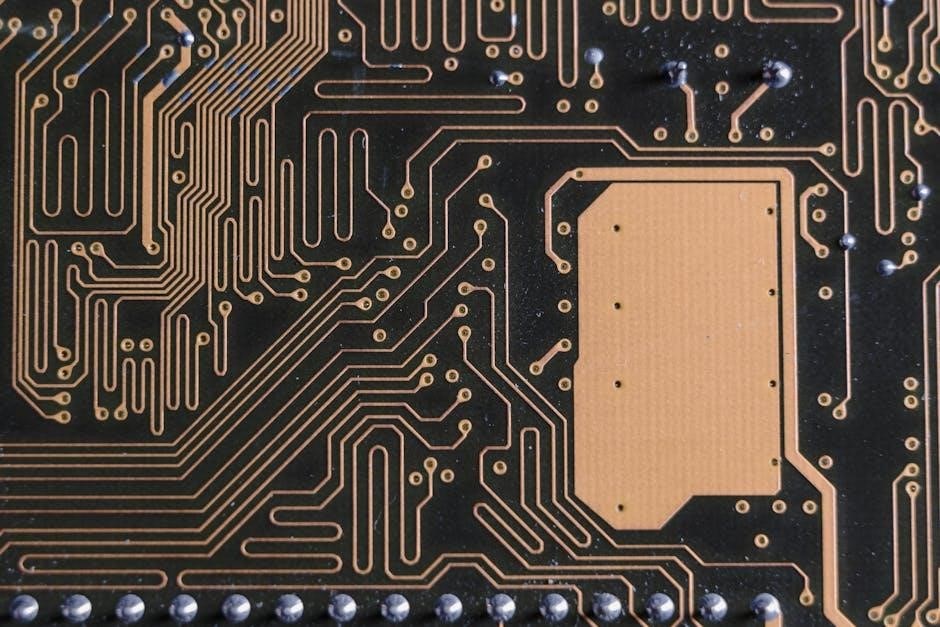
Tools Required for DMX Wiring
Essential tools include wire strippers, crimpers, multimeters, and cable testers for precise connections and troubleshooting. Proper tools ensure reliable signal transmission and system performance.
Essential Tools for Successful DMX Installation
Key tools for DMX wiring include wire strippers for preparing cables, crimpers for secure connector attachments, and multimeters to test voltage and signal integrity. Cable testers ensure proper signal transmission, while XLR and RJ45 connectors facilitate reliable connections. Twisted-pair Cat5/6 cable is recommended for its resistance to interference. These tools ensure precise installations, minimizing errors and optimizing system performance for consistent lighting control.
How to Use Multimeters and Cable Testers
Use a multimeter to measure voltage and verify signal integrity in DMX lines. Set it to DC voltage to check power levels. Cable testers ensure proper wiring continuity and identify faults like shorts or opens. Test each wire pair to confirm connections. Always turn off power before testing to avoid electrical shock. These tools help diagnose issues, ensuring reliable DMX communication and preventing system malfunctions during installations.
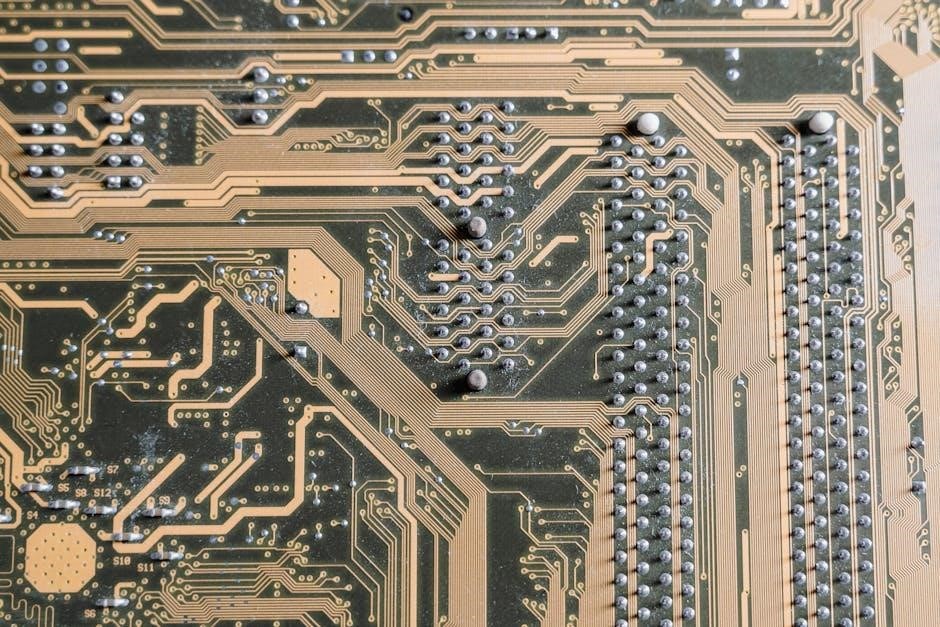
Troubleshooting Common DMX Wiring Issues
Identify voltage drop and signal degradation in long cable runs. Check for improper termination or damaged cables causing reflections. Use multimeters to test signal integrity and continuity.
Identifying and Fixing Voltage Drop Problems
Identifying and Fixing Voltage Drop Problems
Voltage drop in DMX systems occurs when signal strength weakens over long cable runs, causing erratic behavior. Use multimeters to measure voltage levels at fixtures. Ensure proper termination with 120Ω resistors to maintain signal integrity. Install DMX splitters to boost signals and isolate segments. Avoid exceeding cable length recommendations and consider powered splitters for large systems. Regularly inspect cables for damage or corrosion, as these can exacerbate voltage drop issues and degrade performance.
Resolving Signal Reflection and Interference
Resolving Signal Reflection and Interference
Signal reflection and interference in DMX systems can cause distorted commands and erratic fixture behavior. Proper termination with a 120Ω resistor at the cable’s end prevents reflections. Use shielded, twisted-pair cables to minimize electromagnetic interference. Ensure all connectors are securely connected and free from corrosion. Avoid running DMX cables near high-voltage lines or power cables. Grounding DMX systems correctly and using isolators or splitters can further reduce interference, ensuring reliable signal transmission across the lighting network.

DMX Safety Precautions
Always disconnect power before installation. Ensure hands are dry and avoid touching exposed wires. Proper grounding prevents electrical shock, and safe cable handling reduces fire hazards.
Electrical Safety Tips for DMX Installations
Always disconnect power before starting any DMX installation to prevent electrical shock. Ensure hands are dry and avoid touching exposed wires. Proper grounding of equipment is crucial to prevent shocks. Use insulated tools and follow local electrical codes. Never overload circuits, as this can lead to fire hazards. Keep cables away from high-voltage lines to avoid interference. Regularly inspect wires for damage and replace them if necessary. Ensure all connections are secure and meet safety standards.
Avoiding Electrical Shock and Fire Hazards
To prevent electrical shock, always power down systems before handling DMX wiring. Use insulated tools and avoid bare wires. Ground equipment properly and ensure all connections are secure. Overheating can cause fires, so avoid overloaded circuits and damaged cables. Keep DMX lines separate from high-voltage wires to reduce interference risks. Regular inspections and adherence to safety codes are essential for a safe installation, protecting both personnel and equipment from potential hazards.

Future Trends in DMX Wiring
Emerging technologies like wireless DMX and smart lighting integration are transforming the industry. These advancements promise enhanced efficiency, scalability, and seamless connectivity for modern lighting systems.
Emerging Technologies in Lighting Control
Emerging Technologies in Lighting Control
Emerging technologies like wireless DMX and smart lighting systems are revolutionizing the industry. Wireless DMX eliminates the need for physical cables, enhancing scalability and reducing installation complexity. Smart lighting systems integrate seamlessly with DMX, offering advanced control via mobile apps and IoT platforms. Additionally, protocols like DALI and RDM are being combined with DMX for enhanced functionality. These innovations enable energy-efficient, dynamic lighting solutions, making them ideal for modern architectural and entertainment applications.
Integration of DMX with Smart Lighting Systems
Integration of DMX with Smart Lighting Systems
The integration of DMX with smart lighting systems enhances control and efficiency. Wireless DMX and IoT platforms enable remote management via mobile apps. Compatibility with protocols like DALI and RDM expands functionality. Energy-efficient solutions and dynamic lighting effects are achieved through seamless communication. This fusion supports modern smart lighting demands while maintaining DMX512 standards for reliable performance.




About the author